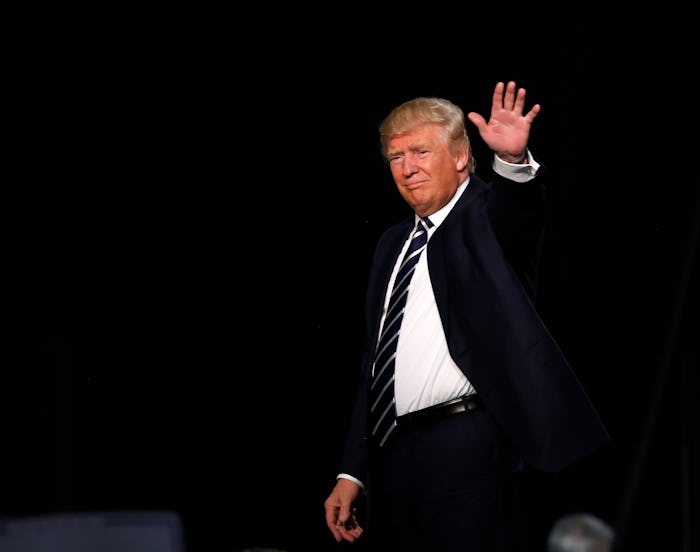
'New York Times' Predicts Trump Will Win & It's A Harsh Reality To Consider
A tweet from Buzzfeed's Deputy News Director sent Twitter into a frenzy when it showed a graph that now reveals the New York Times predicts Trump will win the presidential election. The graph, which came from the NYT's website, highlighted just a moment in time according to current reporting information as results continue to roll in on Tuesday night, but it's an image (and a terrifying reality) the internet can't unsee.
Even with several battleground states left, many (even conservative pundits who have supported him throughout the election) have pointed out that Trump's lead is turning out to be higher than anyone expected. The NYT "Chance of Winning" meter showed Trump at 63 percent just before 10 p.m. Eastern Standard Time. As election night wears on and more states close the polls and report in, these projections become more trustworthy. From minute to minute, these numbers, graphs, charts, figures, and meters will change over the course of the night (and sometimes into the early morning).
As more polls were set to close at the top of the hour at 11 p.m. Eastern Standard Time, NYT had increased its projection to 94 percent for Trump. But that comes before the 55 electoral votes from California, which, if they went to Clinton, could dampen his lead.
With several big "game-changer" states still left to go (that is, states with lots of electoral votes) it's still possible that Trump could lose his lead. However, a candidate needs 270 electoral votes to become president. As more races are called in each state, the margin of uncertainty becomes smaller and smaller as a candidate gets closer and closer to that 270 electoral vote.
The term "electoral college" doesn't refer to a college like a school: in this usage, it just means a group of people basically. Members of the Electoral College don't vote like most people (going to their polling place and filling in a little dot, which is the popular vote). Instead, they are "elected electors" who will vote for a certain candidate. If that candidate wins the state's popular vote, all the elected electors agree to cast their vote (that's the electoral vote).
Each state gets a certain number of these votes based on how big their population is. While a candidate only needs 270 to win, a total of 538 electoral votes are cast.
In a couple of states, an electoral vote goes to the winner of the popular vote, and the rest are divvied up between the winner of each of the state's congressional districts. This is how Maine and Nebraska do it. The other 48 states just send the members of the electoral college to vote if they're voting for who won the popular vote. The electoral college actually doesn't officially cast their votes until December (more specifically "first Monday after the second Wednesday of December", according to NPR).
Trump's lead holds steady as he continues to pull in more votes from states with many electoral votes to give — and FiveThirtyEight, who has consistently predicted Clinton's win throughout the election season, began projecting that Trump has a 55 percent chance of winning the presidency.